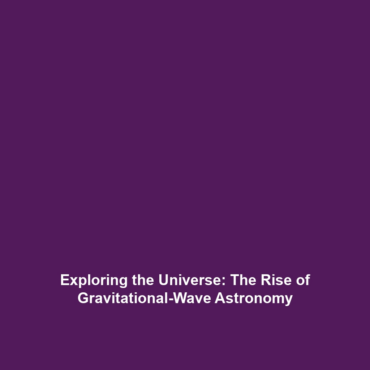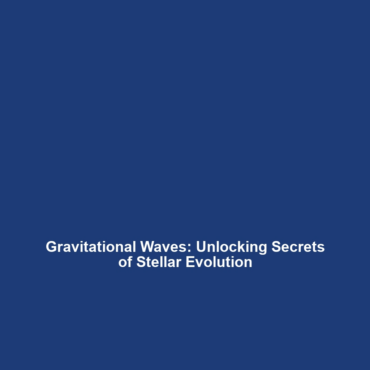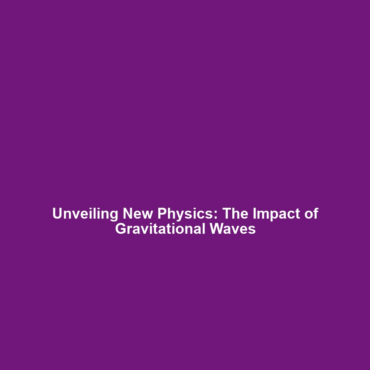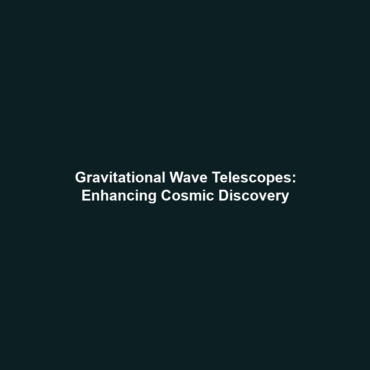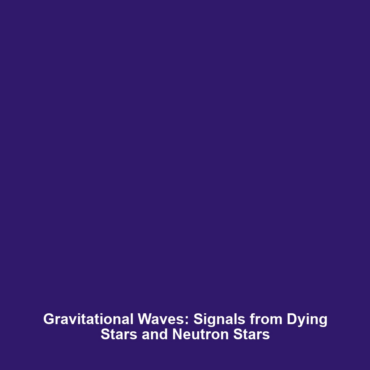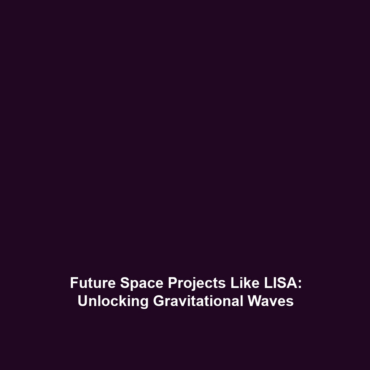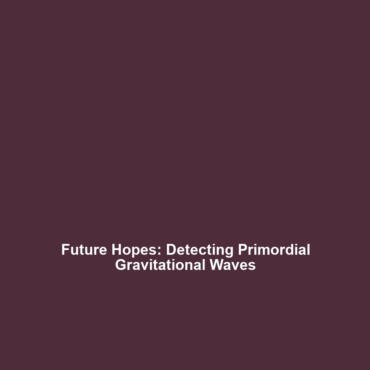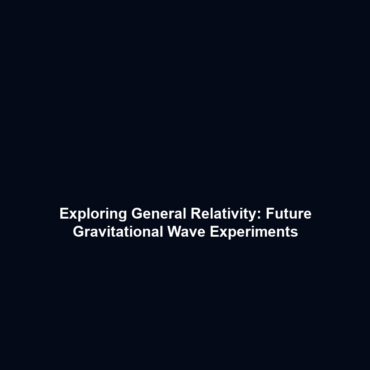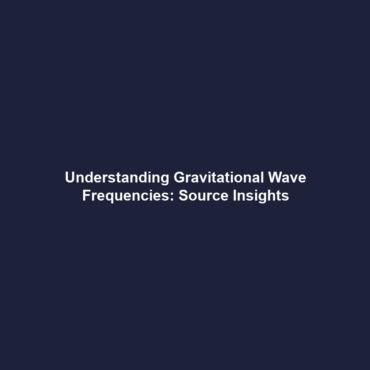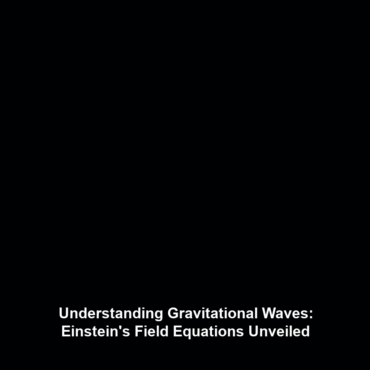Gravitational Waves: A New Way to Observe the Universe
Introduction
Gravitational waves represent a revolutionary advancement in astrophysics, enabling scientists to observe the universe in ways previously deemed impossible. These ripples in spacetime arise from some of the universe’s most energetic events, such as colliding black holes and neutron stars. Gravitational-wave astronomy offers a fresh lens through which we can investigate cosmic phenomena, enhancing our understanding of fundamental physics and the structure of the universe. This article explores the significance of gravitational waves, their applications, the challenges faced, and the future of this cutting-edge field.
Key Concepts
Understanding Gravitational Waves
Gravitational waves are created when massive objects accelerate, causing distortions in the fabric of spacetime. Detectors like LIGO and Virgo have been designed to capture these minute changes, allowing scientists to study astronomical events from a new perspective. Key principles include:
- Waveform Analysis: Analyzing the patterns of observed gravitational waves to infer the properties of their sources.
- Source Localization: Determining the position of astronomical events that generate gravitational waves.
- Multi-Messenger Astronomy: Combining gravitational wave observations with traditional electromagnetic observations for a comprehensive view of cosmic events.
Applications and Real-World Uses
Gravitational waves have numerous practical applications in the realm of gravitational-wave astronomy. Key uses include:
- Astrophysical Research: Using gravitational waves to study the merger of black holes and neutron stars, offering insights into the life cycles of stars.
- Testing General Relativity: Observations provide new data to both support and challenge Einstein’s theories.
- Understanding Cosmic Events: Gravitational waves help illuminate high-energy cosmic phenomena, enhancing our overall understanding of the universe.
Current Challenges
Despite the transformative potential of gravitational-wave astronomy, several challenges impede progress in this field:
- Detector Sensitivity: Enhancing detector capabilities to capture fainter signals remains a technical hurdle.
- The Noise Problem: Distinguishing gravitational waves from environmental and instrumental noise is an ongoing challenge.
- Data Overload: Managing and analyzing the vast amounts of data collected presents significant logistical challenges.
Future Research and Innovations
The future of gravitational-wave astronomy holds exciting prospects. Innovations on the horizon include:
- Next-Generation Detectors: Projects like Einstein Telescope and LIGO 3.0 aim to improve sensitivity and detection capabilities.
- Space-Based Observatories: Initiatives like LISA (Laser Interferometer Space Antenna) could open new data streams from space, allowing for the detection of lower frequency gravitational waves.
- Interdisciplinary Approaches: Collaborations with astrophysicists, engineers, and data scientists will enhance interpretation and understanding of multifaceted data.
Conclusion
Gravitational waves are not merely a new tool; they signify a paradigm shift in how we observe and understand the universe. As our capabilities in gravitational-wave astronomy expand, so too does our potential to unlock cosmic mysteries. Continued investment in research and technological innovation is crucial for overcoming current challenges and harnessing the full capabilities of this remarkable field. For more insights, explore our sections on Applications of gravitational waves and Current Challenges.
This structured article provides a comprehensive overview of gravitational waves and their significance in astronomy while ensuring SEO optimization through relevant keywords and clear organization.
